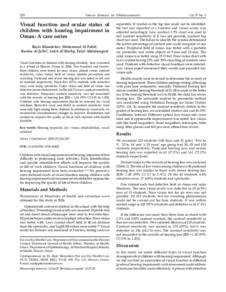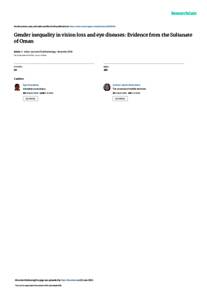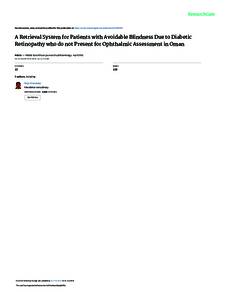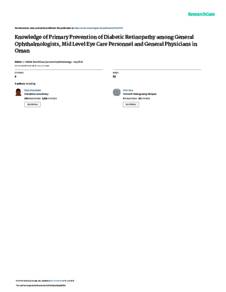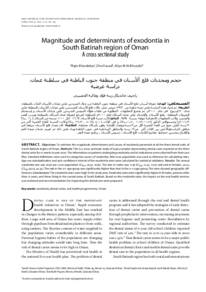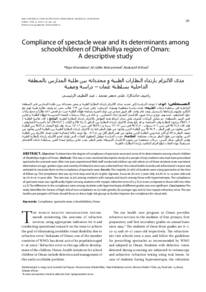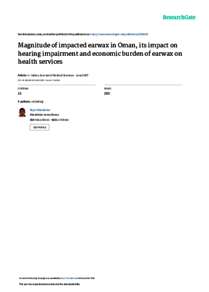Document
Prevalence and determinants of blindness, low vision, deafness and major bone fractures among elderly Omani population of Nizwa Wilayat (Nizwa elderly population study - 2005).
Contributors
Publisher
Elsevier B. V.
Gregorian
2010-07
Language
English
English abstract
Aim: We conducted a survey in 2005 to estimate the prevalence and determinants of visual and hearing impairment in a population aged 60 years and above, from the Nizwa Wilayat of Oman. We also correlated them with major bone fracture. Study Design: Cross-sectional survey. Materials and Methods: Vision was tested on Snellen's ′E′ chart. Persons with vision less than 20/200 were reexamined by an ophthalmologist to find cause of impairment. Hearing was tested by a screening audiometer. Self-reported information on fracture of major bones was confirmed by review of case records. The prevalence, 95% confidence intervals (CI), and number of visually impaired individuals were calculated. Statistical Analysis: Univariate method and parametric tests were used for analysis. Results: We examined 1,639 (80.3%) Omani persons aged 60 years and above. The prevalence of blindness (vision less than 20/200 in the better eye) was 37.4% (95% CI 35.7-39.1). Blindness was significantly higher in females (Odd's Ratio = 2.1) but was similar in urban and rural Nizwa (OR = 0.73). The prevalence of vision impairment (20/60 to 10/200) was 36.0% (95% CI 34.3-37.7). Cataract was the principal cause in 50% of the blind. The prevalence of glaucoma, corneal opacity, and chronic trachoma was 3.1%, 66.8%, and 53.2%, respectively. Among participants, 36.1% had diabetes. Hearing impairment was noted in 33.5% and profound hearing loss was noted in 3.6% of participants. In the past year, 1.4% of participants had a major bone fracture. Conclusion: Visual and hearing impairment and blinding eye diseases were common among senior Omani citizens.
Member of
ISSN
0301-4738
Resource URL
Identifier
DOI: 10.4103/0301-4738.64143
Same Subject
